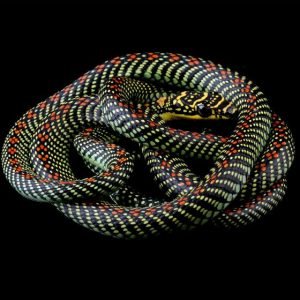
Asthma is a chronic health condition that affects almost 25 million people in the United States.1 Although researchers identified type two innate lymphoid cells (ILC2s) as contributors to allergic asthma several years ago, their role in the initial development of asthma is unclear.2
“What we’re trying to do is connect the dots between early life infections and ILC2s as the initial drivers of asthma susceptibility and asthma pathogenesis,” said Anna Beaudin, a hematopoietic stem cell (HSC) biologist at the University of Utah. She and her team explored the effect of prenatal inflammation on ILC2s in the lung and their influence on allergy-induced asthma in mice.3 The findings, published in Cell Reports, set the stage to better understand early life factors leading to allergy conditions.
“Lung development early in life can have a lifetime effect,” said Nicholas Lukacs, an immunologist at the University of Michigan who was not affiliated with the study. “We’re beginning to now see studies coming out clinically that suggest that early life perturbations like increased [allergic T cell] environment may alter how the lung develops and that detrimental lung response early in life may have a lifetime effect, including increased asthma later in life childhood and on into adulthood.”
To investigate the effect of inflammation on the developing immune system, Beaudin’s team treated pregnant mice with polyinosinic:polycytidylic acid (poly(I:C)), a non-microbial immune cell activator, at 14.5 days of gestation (E14.5) to induce a maternal inflammatory response. After the animals were born, the researchers observed that poly(I:C)-exposed mice had more ILC2s in their lungs compared to saline-exposed mice from day nine through 14, and this trend continued into adulthood. ILC2s from poly(I:C)-exposed mice also produced greater amounts of allergy-associated interleukin (IL) 5 and IL-13 after the cells were stimulated with a different inflammatory agonist.
To determine if prenatal inflammation altered the progenitor cells that produce ILC2s, the team isolated HSCs one day after E14.5 poly(I:C) or saline treatment and transferred these stem cells into adult mice. Four weeks after HSC transfer, the team observed that ILC2s developed from donor HSCs produced more IL-5 and IL-13 after stimulation with the second agonist. “It’s a proof of principle that this is programming at the stem cell level that results in a hyperactivated ILC2 in the offspring,” Beaudin said.
Next, the researchers investigated the transcriptional changes to ILC2s caused by prenatal inflammation. They identified two clusters of ILC2s with altered populations between polyI:C- and saline-exposed mice by single cell sequencing. In ILC2s from the polyI:C-exposed group, one of these clusters expressed genes associated with activated cells, while the second expressed genes associated with progenitor-like and memory-like activities.
The team turned to studying the effect of hyperactivated ILC2s on lung immune responses. Prenatal inflammation skewed the T cell population toward T helper type 2 cells, which are implicated in allergy. Additionally, ILC2 populations expanded after challenge in 14-day old animals with the allergen papain in both prenatal saline- and poly(I:C)-exposed mice, but to a greater degree in animals exposed to the inflammatory stimulus. Papain challenge also increased eosinophil numbers in the lung, but only in poly(I:C)-exposed mice.
Exposure to prenatal inflammation alters lung composition in adult mice. Mice exposed to poly(I:C) in utero (Adult Lung-pIC Saline, middle) have baseline lung pathology that resembles mice only exposed to the allergen papain as adults (Adult Lung-Saline Papain, left). Treatment with papain after prenatal inflammation exposure worsens lung architecture (Adult Lung-pIC Papain, right).
Elizabeth Meyers
To determine if the effects of prenatal inflammation on lung allergy responses persisted into adulthood, the team exposed adult mice to papain. The amount of ILC2s remained elevated in mice exposed to prenatal inflammation compared to non-exposed mice, but unlike in young mice, the ILC2 population did not increase after allergen challenge. However, lungs from mice exposed to poly(I:C) in utero had increased mucus cell numbers and deposits at baseline, resembling the lungs of non-exposed, papain-challenged mice.
Prenatal inflammation also impaired the baseline respiratory function, which worsened with papain treatment. “We believe that this is due to these ILC2s that set the immune tone in our tissue that is perpetuated into adulthood,” explained Beaudin.
“[This study] builds upon this idea that something happening [in utero] has a significant influence on the development of the immune response in the offspring,” said Lukacs. He said that while the study supported that ILC2s were mechanistically involved in the altered lung architecture and function, future studies should deplete these cells to confidently determine if they are the driving force behind allergic asthma susceptibility.
“This really demonstrates how early life inflammation may be a predisposing risk factor for asthma susceptibility,” Beaudin said. “We can use that to tease apart the mechanisms by which that happens and how we might be able to prevent asthma in the future.”






